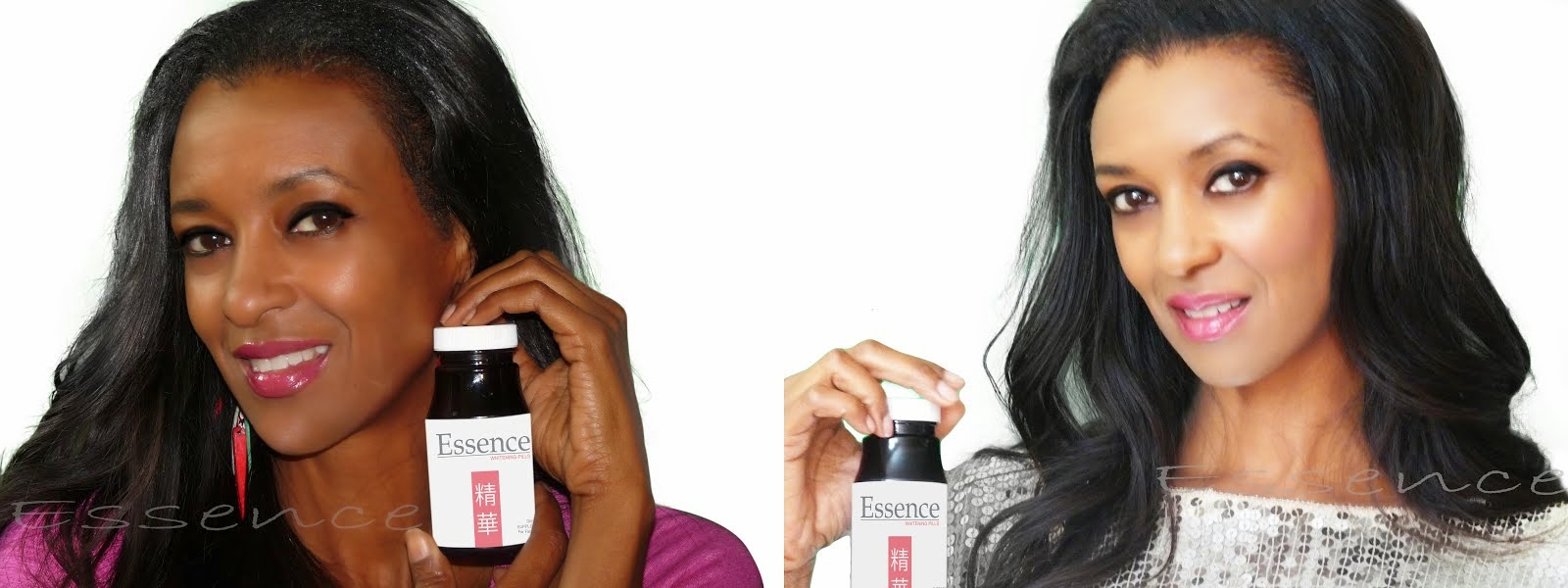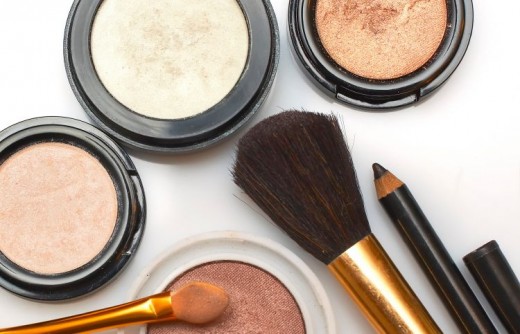- In healthy adults, Vitamin C raises glutathione levels in the red blood cells and lymphocytes
- Glutathione helps determine the balance of light and dark pigments (pheomelanin and eumelanin) in our skin. L-cysteine and the TYRP1 enzyme also play a part in this balance
- Taking high doses of Vitamin C (1,000 – 3,000 mgs) can help to lighten skin over time
|
Since you’re reading this page, you’ve probably already asked yourself: can taking Vitamin C really lighten your skin?
The short answer is: Yes, it can.
But how exactly does Vitamin C help lighten our skin?
The answer to that question is a bit longer, but reading on will be worth it in the end (I promise!). If you don’t have the time to read about just how taking high doses of Vitamin C can lighten your skin, just bookmark this page to read later.
What is Vitamin C?
Before I go on to explain what Vitamin C has to do with our skin color, I think it’s important to know just what Vitamin C is first.
Vitamin C (also called Ascorbic Acid) is a water-soluble vitamin, and is needed by our bodies to form collagen in bones, cartilage, muscle and blood vessels. We get Vitamin C from fruits and vegetables, particularly citrus fruits like lemons, limes and oranges. It is also readily available in pill or liquid supplements.
Although it is a vitamin, Vitamin C is also an antioxidant. This means it can neutralize free radicals which would otherwise damage our skin and other organs. And since it is soluble in water, Vitamin C works both inside and outside of our cells to combat this free radical damage.
 Vitamin C and our skin
Vitamin C and our skin
The skin is the largest organ in the human body and collagen is the building blocks. Our skin benefits greatly from Vitamin C because of its unique collagen-forming properties.
Scientists have found that collagen protein requires Vitamin C for the molecules to achieve the best configuration possible. Vitamin C prevents collagen from becoming weak and susceptible to damage (a process is called hydroxylation). Vitamin C also increases the level of the procollagen messenger RNA. It is also needed to “export” the procollagen molecules out of our cells and into the extracellular spaces. In other words, Vitamin C is crucial in ensuring the structural integrity of our collagen.
Vitamin C also helps to heal any wounds we might have. Studies have shown that when Vitamin C was given to burn victims in high doses, it reduces the transfer of blood and waste products into the tissues (capillary permeability). This could be partly due to Vitamin C’s scavenging effect on free radicals (its antioxidant properties).
In another study, when Vitamin C (2,000 mg) and natural Vitamin E (1,000 IU) were given to 20 men and women, their resistance to sunburn increased by 20% after just 8 days. They had lower levels of inflammation and skin damage compared to the placebo group, which became more sensitive to sunburn.
Vitamin C is one antioxidant that boosts two more – glutathione and Vitamin E
Have you ever heard of that saying, one thing leads to another? This is especially true with Vitamin C.
This is because taking Vitamin C doesn’t just increase the Vitamin C levels in our blood, it also increases two more very important antioxidants – glutathione (a major antioxidant) and Vitamin E (a fat-soluble antioxidant).
Higher Vitamin C levels boosts glutathione and Vitamin E
|
| Glutathione | Vitamin E |
| Glutathione is our bodies’ most prevalent antioxidant | Vitamin E is probably the most important fat-soluble antioxidant |
| It plays an important role in detoxing our bodies | It protects our cells from oxidation by reacting with fatty radicals |
| Glutathione is a tripeptide and made up of 3 amino acids:
- Glycine
- Glutamic acid
- Cysteine
| Vitamin E is a group of compounds made up of tocopherols and tocotrienols. Tocopherols act as antioxidants in human beings. |
| Glutathione converts into glutathione peroxidase, an important enzyme which prevents oxidative damage | Our liver actually forms the Vitamin E in our blood, but it needs food sources with Vitamin E to do so |
| Our bodies make its own glutathione supply.Taking glutathione pills and supplements does notraise the glutathione levels in our blood.
| Good food sources of Vitamin E include:
- Wheat germ oil
- Almonds
- Sunflower seeds, sunflower oil
- Hazelnuts
- Peanut butter
|
Vitamin C boosts glutathione levels in the blood
Vitamin C and glutathione have a unique relationship. Vitamin C reduces glutathione back to the active form. In its active form, glutathione will regenerate vitamin C from its oxidized state.
Compounds that have Vitamin E activity (tocopherols) also rely on Vitamin C to regenerate back to its active form.
Why is the link between Vitamin C and glutathione levels important in skin lightening?
It’s important because scientists have found out that the way our skin balances between its lighter pigments (pheomelanin) and darker pigments (eumelanin) depends on glutathione, L-cysteine and the TYRP1 enzyme.
Since Vitamin C has been scientifically proven to boost gluthathione levels in the blood, we can say that Vitamin C helps to lighten skin color.
1) Glutathione
Glutathione is found in almost all raw fruits and vegetables. Cooking destroys most glutathione, but that doesn’t really matter. Because although glutathione is found in many fruits, vegetables, and meats, our stomachs and intestines ability to absorb glutathione is very poor.
Speaking of which, please do not be fooled by “gluthathione skin whitening pills”. Glutathione pills and supplements cannot raise the glutathione levels in your blood. They will only serve to make you poorer.
To raise the glutathione levels in our blood, it is better to eat foods that is high in glutamineinstead, such as lean meats, eggs, wheat germ, whey protein and whole grains. These will stimulate the liver so you can produce more glutathione naturally. Glutamine is one of the known precursors of gluthathione production.High doses of Vitamin C will also boost our natural glutathione levels, so supplementation with Vitamin C is important if you want to lighten your skin. Glutathione and Vitamin C show a strong, functional interdependence in vivo.
Note: You can be deficient in glutathione if you take Tylenol (acetaminophen) regularly or in large amounts. Doctors treat emergency cases of acetaminophen toxicity with high doses of N-aceytlycysteine (NAC), which raises glutathione levels in the blood.
2) L-cysteine
L-cysteine is an amino acid found in most high-protein foods including yogurt and whey protein. Good vegetarian sources comes are onions, garlic and broccoli . The L-cysteine derived from N-Acetyl Cysteine (NAC) helps to boost our liver’s production of glutathione. L-cysteine also helps synthesize proteins, taurine, coenzyme A, and inorganic sulfate.
3) The TYRP1 enzyme (or Tyrosinase-related protein 1)
Sounds scary, I know! But all you really need to know is that this is the genetic part of the whole skin lightening discussion. Our TYRP1 gene provides instructions for making the TYRP1 enzyme. The functions of this enzyme are still unclear but it is involved in the production of melanin. It’s likely that this is where our genes come into play in determining the color of our skin.
Mutations in the TYRP1 gene has been linked with oculocutaneous albinism.
It is very important to note that, individually, none of these factors decides our skin color. All three are needed to play a part.
Enemies of Vitamin C: pollution, smoking, alcohol, diabetes
If you smoke and drink, chances are your Vitamin C levels are lower than people who don’t. And while we’re at it, do you live in a polluted area? That’ll do it too.
Studies have shown that drinking large quantities of alcohol will lower the amount of Vitamin C in your blood plasma and make you excrete vitamin C through urination. Smoking and general pollution will also lower the level of Vitamin C in the blood. Having diabetes will also reduce your body’s Vitamin C levels.
What does all this mean? Should I take Vitamin C to lighten my skin?
Yes, yes, and yes! If want to lighten your skin by internal means using supplements, detoxing or changing your diet, Vitamin C supplements are essential.
Dosage
You should take a high dose of 1,000 – 3,000 mg of Vitamin C daily either through supplements or fruits. A mixture of the two is best. Spread out your intake of Vitamin C throughout the day for maximum effectiveness.


 Vitamin C and our skin
Vitamin C and our skin
